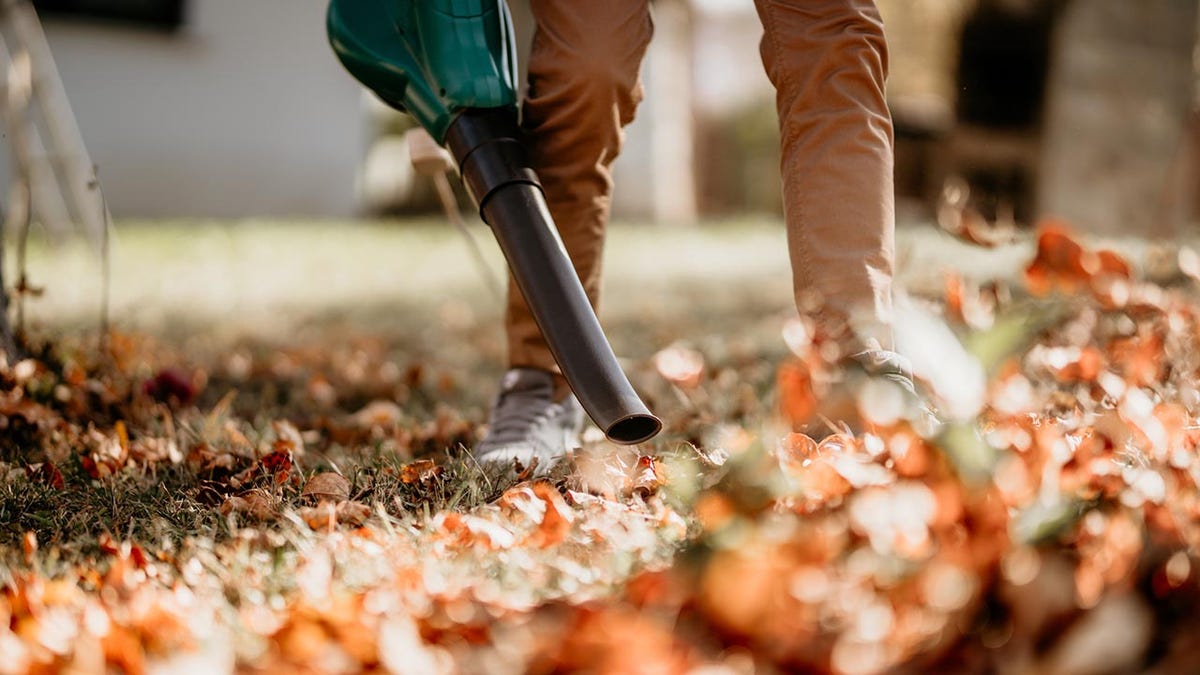
"Leaf removal helps ensure that your grass still looks beautiful when spring comes around,” says a landscaping expert. (iStock)
Autumn makes a strong case for being the most beautiful time of year. But when temperatures start dropping, so do red, orange, and gold leaves — all over your property. Once you’ve had your fill of jumping in big leaf piles, it’s time to consider how to dispose of them.
“As fall approaches, preparations must be made to a lawn to avoid damage over winter. Leaf removal helps ensure that your grass still looks beautiful when spring comes around,” says Jeremy Yamaguchi, founder and CEO of Lawn Love, in San Diego.
Don't "fall" behind in taking care of the leaves in your yard. With autumn upon us, it’s time for cleanup, and homeowners have a variety of options when it comes to leaf removal.
1. Mow and mulch them
Not feeling the rake today? Power up your John Deere.
“If you only have a few leaves in your yard, we recommend that you just mow over them. They will get cut up and eventually get reabsorbed into the soil, providing your lawn with a boost of nitrogen before the winter sets in,” says J. Eric Engledow of Engledow Group, a landscape design and maintenance firm in Carmel, Ind.
More From Realtor.com
You're basically turning the leaves into mulch, which is good for insulating and fertilizing your lawn, shrubs, trees, flowers, and vegetable beds.
You may need to redistribute some of the mulched leaves, though, so that you don't smother certain parts of your lawn. Similarly, Engledow says to avoid leaving a layer of unprocessed leaves on your lawn over the winter, since it will block out the sun and air from getting to your lawn and harm the grass, which may require reseeding in the spring.
2. Compost them
If you have a designated compost pile, dead leaves are a great addition to the mix. Again, they'll decompose faster if you shred them first.
“The leaves, combined with other materials, can create a wonderful compost pile that you can then use in your flower beds or gardens come springtime,” says Engledow.
3. Bag them
When all else fails, it’s time to get back to basics: Get out the rake, put those gloves on, and get to work collecting leaves into bags.
“Yard bags make it easy to transport leaves to your compost, mulch pile, or green bucket,” says Yamaguchi.
Check your city or county website to find out whether it provides curbside pickup of bagged or piled leaves.
4. Blast them with a blower
Yeah, some leaf blowers are noisy, but they get the job done. A leaf blower is recommended for managing and redistributing fallen leaves in larger yards with more trees.

Just don't blow them onto a neighbor's lawn. (iStock)
“For larger lawns, we recommend a leaf blower in order to save time and wear and tear on your back,” says Engledow.
Avoid blowing leaves into the street — leaves left to decay in the street will release phosphorous, which can clog storm drains and waterways. Leaf blowers should be used on larger properties with lots of land.
For more ways to dispose of leaves, continue reading the original article at Realtor.com: "6 Ways to Properly Dispose of Leaves This Fall."



















